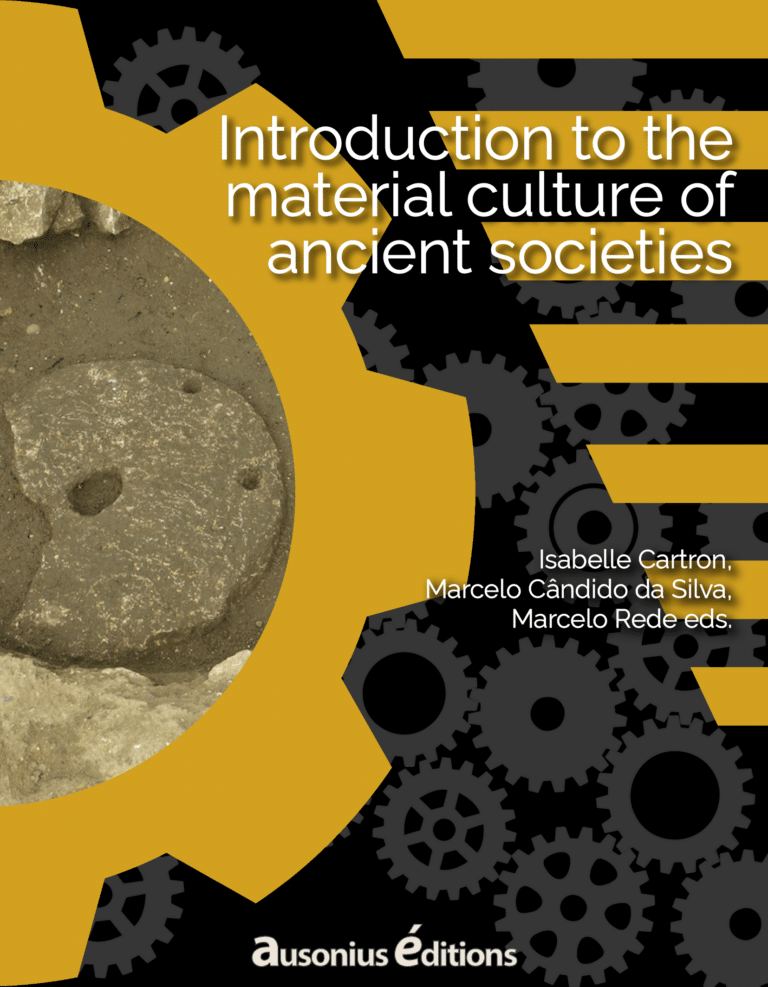For almost a century, archaeologists and historians have long debated the role of trade in the economies of ancient and medieval societies. Primitivist and modernist1 views have been at odds over the existence and role of the economy and the market in Antiquity and the Middle Ages. The overcoming of this debate began in the 1970’s with the relative success of primitivism visions based on the work of Moses I. Finley2 and the influence of Karl Polanyi’s model of embeddedness.3 The debate has crystallised around the notion of “market”. The market should be understood as the meeting of supply and demand (market principle) and not necessarily a physical place (market place). It is, for example, the question of whether or not agricultural and craft production provides a marketable surplus. The question of increasing trade also raises the issue of the monetarisation of ancient societies. The concept of “growth” was also discussed in Antiquity and the Middle Ages, as were the mechanisms for setting prices. Today, historians and archaeologists agree that the economy of the majority of ancient and medieval populations was a subsistence economy very closely linked to society. Ancient societies were deeply marked by reciprocity, redistribution and the embedding of exchanges in the political, social and religious spheres. However, this does not rule out the existence of economic thinking and rationality in these periods.
Specialists in material and textual sources have three criteria to highlight, which are what we might call the heart of the economy of ancient societies: the forms of agricultural production, the place of towns and the development of the world of trade. It’s virtually impossible to distinguish for these periods between agricultural production for consumption (by the producer) and production for exchange. For the artefacts, depending on the documentation available, we therefore need to analyse precisely the nature of the economic agents, the morphology and the multiple forms of trade (market or non-market).4 For example, by studying ceramics, we can identify centres of production, areas where goods were traded and traffic flows. However, it is very complicated to know the status of craftsmen or the exact conditions of circulation of objects. In the same way, the discoveries of monetary treasure tell us neither about the identity of the owner, nor about the function of the buried coins. Only commercial circuits are documented by this type of data. We are therefore limited to a very subjective approach to the realities and issues of commerce for ancient and medieval societies.
For the early Middle Ages, since the pioneering work of Henri Pirenne in the first third of the twentieth century,5 economic historians have moved beyond the controversy between the concepts of a closed domestic economy (Geschlossene Hauswirtschaft) and an autonomous economy (Eigenwirtschaft). Today, for the Frankish world, we insist on the coexistence between an economy based on exchanges in kind with a monetized economy. Likewise, the role of social elites has been largely reassessed upwards.6 The latter were once seen as simple parasites, incapable of investment, they are today seen as stimulating trade through their consumption and their capacity to economically organize their lordship through their levies on their dependence.7 The manorial system is also associated with the first economic growth of Europe from the eighth and ninth centuries.8
Finally, the question of the place of exchanges in ancient societies cannot be understood on a single geographic scale. Indeed, in societies characterized by food insecurity, the local and regional levels remained essential for acquiring food and exchanging current goods. However, the superregional or international scale, whose influence varies the most, never completely disappears for luxury products. The goal for historians and archaeologists is to be able to articulate these different scales to understand the diversity of economic and social situations of the human groups studied.
References
- Devroey, J.-P., 2003: “Économie rurale et société dans l’Europe Franque (VIe-IXe siècles)”, I, Fondements matériels, échanges et lien social, Paris.
- Feller, L., 2011: “Formes et fonctions de la richesse des élites au haut Moyen Âge”, in: Devroey, J.-P., Feller, L & Le Jan R. (dir.), Les élites et la richesse au haut Moyen Âge, Turnhout, HAMA 10.
- Finley, M. I., [1973] 1975: L’économie antique, Paris.
- Loveluck, C., 2009: “The dynamics of elite lifestyles in the ‘rural world’, AD 600-1150: Archaeological perspectives from Northwest Europe”, in: Bougard, F., Le Jan, R. & McKitterick, R. (dir.), La culture du haut Moyen Âge: une question d’élites ?, Turnhout, HAMA 7.
- Pirenne, H., 1937: Mahomet et Charlemagne, Paris.
- Polanyi, K., [1944] 1983: La Grande Transformation, Paris.
- Rostovtzeff, M. I., [1941] 1989: Histoire économique et sociale du monde hellénistique, Paris.
- Wickham, C., 2005: Framing the Early Middle Ages: Europe and the Mediterranean, 400-800, Oxford.



